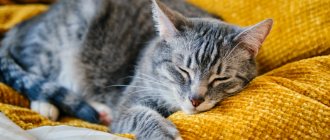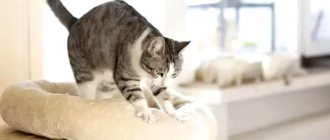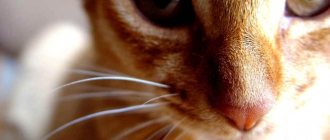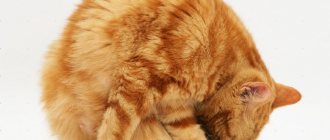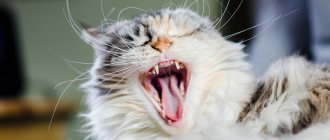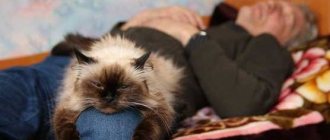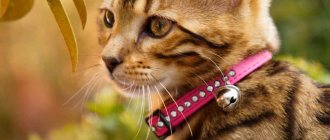It's not entirely clear why cats purr or even how they do it, but you can usually expect your favorite feline to purr when he's feeling content. Purrs are common in cats when they are petted, cuddled in a lap, or sunbathed by a window. Some cats purr simply because they enjoy it. However, cats sometimes purr when they feel bad or in pain.
Therefore, you must pay attention to your cat's mood and physical behavior to determine why she is purring. Moreover, some cats never purr their entire lives, and some cats that once purred stop purring. But why is this? Let's look at why your cat may not purr and discuss what you can do about it.
They just don't like it
Sometimes cats don't purr because they don't want to. But just because your cat isn't purring doesn't mean she's unhappy. It just means they don't want to purr. If your cat usually purrs when you pet her but doesn't purr from time to time, chances are she just won't want to purr at those times. However, if your cat stops purring altogether when you pet her, this could be another reason for the silence.
Image Credit: Paul Hanaoka, Unsplash
Why do cats purr?
Typically, the purring range of cats is 25 dB. But in 2015, Merlin, a domestic cat living in the UK, purred 67.8 dB and entered the Guinness Book of Records as the loudest cat. The sound it produces easily drowns out television programs and even the dishwasher. But what makes cats purr?
Current
- Leopard fighting with porcupine caught on video
- An incredibly fat cat from Russia has conquered social networks
- Black snow fell in the Magadan region
It is a common belief that the purring of cats is a sure sign of a good mood. What do they need to be happy? Eat and lie on the owner’s lap so that he can scratch behind the ear and stroke it. But pleasure is not the only reason. So why do cats purr?
The purring of cats varies. With its help, adults, for example, remind their owners about lunch
Kittens begin to make sounds when they are two to three days old, and this is their way of communication. So the mother finds her cubs and realizes that it is time to feed them.
In 2009, scientists from the University of Sussex suggested that cats purr differently. And with the help of it, adults, for example, remind their owners about lunch. Dr. Karen McComb, who led the work, was inspired to conduct the research by her own cat, Pepo. He woke up his owner with persistent purring, but as soon as she filled the bowl with food, he fell silent.
The woman recruited volunteers and asked them to record the sounds their pets made under different circumstances, and then analyzed the reasons for the cats' purring. It turned out that, demanding the attention of the owner, cats add high frequencies to the rumbling, and this sound is not at all similar to the one that an animal makes when stroking. It is rather like the cry of a baby. It is impossible not to react to him.
There are other reasons why cats purr. For example, there are sounds that an animal makes when it is stressed or when it is near a sick relative or owner. It doesn't quite sound like purring. And the cat is not purring in this case for the sake of moral support. American scientist Elizabeth von Muggenthaler noticed that not only domestic cats purr, but also lions, cheetahs, jaguars and other representatives of the cat family. She studied the purring of 44 species of cats and found that the sound they made was heard in the range from 20 to 140 Hz. And vibrations in this range have a therapeutic effect.
Frequencies in the range of 25–50 Hz help well with bone fractures, and frequencies around 100 Hz promote tissue repair. Presumably, after stress, a cat purrs for this very reason: it heals itself by rejuvenating its tissues. Thus, Elisabeth von Muggenthaler concluded that rumbling helps a cat to heal itself, and this gives a significant advantage in the fight for survival. By the way, washing is also a healing process. And ritual. We discussed in more detail why cats wash themselves in our material.
Strengthening bones by vibration is necessary for cats not only to treat injuries, but also because they sleep 16-18 hours a day, and excessive immobility is harmful to health
The owners also get a little. Moreover, it has long been noted that communication with cats helps relieve psychological tension and stress. But scientists from the University of Minnesota have proven that their therapeutic effect is much more serious. Cats purr and help their owners recover. Led by Adnan Qureshi, a team of doctors monitored the health of 4,435 Americans aged 30 to 75 for ten years. 2,435 of them had cats, and 2,000 did not.
As a result, scientists noticed that cat owners risk dying from a heart attack by 30% less than “loners.” So it is no coincidence that purring therapy is gaining popularity around the world. Here is another answer to the question why cats purr.
And scientists at the University of California at Davis even proposed using purring at 25 Hz to quickly restore musculoskeletal activity in astronauts who spent a long time in zero gravity. In doing so, they relied on the theory that strengthening bones by vibration is necessary for cats not only to treat injuries, but also because they sleep 16-18 hours a day, and excessive immobility is harmful to health.
It seems that we have figured out why cats purr. But how do they do it? This is not known for sure. They do not have a special organ for purring.
American professor and popularizer of science Kurt Steiger, like most other scientists, believes that it’s all about the muscles of the larynx. Between the base of the skull and the base of the tongue are the thinly connected hyoid bones. When the muscles near the vocal cords contract, they vibrate and we hear a “murr.” And the mechanism is triggered by electrical impulses arising in the cerebral cortex. They travel to the muscles located near the vocal cords and cause them to contract. By the way, do you know why cats chirp?
They are sick or injured
A cat may purr to relieve stress when it is sick or injured, but more often cats will stop purring altogether until they feel better. Injury can affect your cat's ability to purr, even if she wants to. Damaged nails, dental infections, and even insect bites can cause injury. Many types of illnesses, from major infections to food poisoning, can cause a cat to stop purring.
If your cat isn't purring due to injury or illness, you may notice other signs of discomfort such as whining, vomiting, and lethargy. You can check for injuries by lightly rubbing your cat's body to see if any area is sensitive to touch. Also examine their mouth and teeth. Any signs of illness or injury associated with a lack of purring should be brought to the attention of a veterinarian immediately.
Can purring cure a person?
Cat “music,” if not a complete cure, can significantly speed up recovery. Purring with a frequency of up to 140 hertz promotes the healing of various injuries. When bones and tendons are damaged, the pain subsides and the tissues slowly recover. If a person suffers from arthrosis, osteochondrosis or radiculitis, then a cat will help; if a person has ailments of internal organs (or systems), a cat will help.
Purring has a positive effect on the nervous system and calms the general condition of the body, so purr therapy is recommended for use in cases of stress, insomnia, rehabilitation of drug addicts and alcoholics (purring reduces withdrawal symptoms). In addition, such vibrations help improve blood circulation, normalize blood pressure and heartbeat, alleviate symptoms of gastrointestinal disorders (colitis, flatulence, gastritis, stomach ulcers, etc.), increase immunity - people who have cats are less likely to get colds diseases.
It is not necessary to ask the animal to lie down on the sore spot - often cats themselves detect the source of pain
Purring is especially useful at the moment when the cat is doing a “claw massage.” Thus, vibration, uniform sound and the effect of acupuncture have the greatest beneficial effect on human health.
My cat happily lies/sits on the chest (or back) of any family member. She rolls her eyes, massages and purrs. Each such session can last up to half an hour. After this, Khosya falls asleep. As a rule, the one on whom she was lying or sitting also falls asleep.
They're just getting old
Sometimes cats lose energy as they age. Instead, they prefer to use their energy for eating and playing. Even though they don't purr, older cats can be just as happy as younger ones. They simply may not have the energy or means to show you their appreciation and happiness as they used to.
Image Credit: Sleepy Cat, Unsplash
What to do
There is little you can do about the lack of purring other than provide encouragement to your cat if necessary. If they don't seem normal, you should make an appointment with your veterinarian to see if anything can be done to make them feel better. They may start purring again once they feel like themselves. If your cat just doesn't want to purr, all you can do is love her and reward her with petting and cuddling. If they get old, you may just have to live with the lack of purring from now on, but you can still expect the love and attention you've always received.
The science behind a cat's purring
Just like humans, cats have many ways to signal their presence. These include sounds and body language. Sounds may include purring, screaming, meowing, hissing, and chirping.
Purring is distinguished by the fact that it is present throughout the entire respiratory cycle - both during inhalation and exhalation. The facts behind how this is possible are still shrouded in mystery, but several theories have been floated. Here they are:
Theory #1: Vibrating vocal cords
One theory suggests that the source of purring is the muscles of the larynx, whose job is to open and close the space between the vocal cords (the glottis). The muscles receive a repetitive signal from neurons in the cat's brain, causing the muscles to vibrate between 25 and 150 times per second.
One theory suggests that the source of purring is the muscles of the larynx
Rapid expansion and contraction of the glottis causes detachment of the vocal cords. The air exchanged by the respiratory system during inhalation and exhalation vibrates, resulting in purring. This is the leading theory in explaining the phenomenon. The theory is supported by the fact that cats with laryngeal paralysis cannot purr.
Theory #2: Soft palate
Another theory suggests that purring originates in the back of the throat. This region contains the elongated soft palate, which contains skeletal muscle fibers. This theory states that cats can voluntarily vibrate their soft palates to produce purring sounds.
Theory #3: Boiling Blood
This theory suggests that the purring is the sound of boiling blood. The vibrating sound is the result of increased blood flow in the main artery (inferior vena cava). This artery has a narrowing near the cat's diaphragm. The movement of blood through this narrowing results in a rhythmic noise that is amplified by the diaphragm.
Perhaps purring is the sound of boiling blood
This sound travels through the cat's trachea and cranial cavity, resulting in purring. The hair on a cheetah's chest vibrates when it purrs, which indirectly supports this theory. However, when it comes to domestic cats, their chest hair remains dormant when they purr.
Theory #4: Hyoid bone
The hyoid apparatus is a series of small bones that support the larynx and hold the tongue in place. This theory suggests that purring occurs when the hyoid apparatus vibrates.
Theory #5: False vocal cords
This theory views purring as vibrations produced by the movement of air over the false vocal folds. These mucous membranes are located in the vocal box behind the true vocal cords.
Final thoughts
Everyone loves to hear their cat purr. The sound and sensation of purring usually confirms the fact that they are happy. But just because your cat isn't purring doesn't mean you're doing anything wrong or that she's unhappy about anything. Watch for signs of trouble, but if you don't see any, chances are your cat just isn't interested. How often does your cat purr and do you notice that she doesn't purr when you expect her to? Tell us about your experience by leaving us a comment!
Posted by Christian Adams An American expat living in Metro Manila, Philippines for over a decade, Christian is a lifelong cat lover and the proud father of two rescue cats, Trixie and Chloe. Both girls used to be among the crowds of homeless people who roam the cities and countryside. Three-year-old Trixie was rescued from a litter found under a neighbor's porch, and two-year-old Chloe was brought home by Christian's young son, Henry, who discovered the crying kitten in the parking lot.
Rumbling is a sign of peace and more
Many of us believe that since a cat purrs, then everything is fine. But, unfortunately, such uterine sounds are not always a sign of pleasure or satiety. Let's see in what cases you can hear a cat purring:
Photo: Scottish Fold kitten | Dreamstime.com
- Possessive rumbling
- if a cat tramples with its front paws and purrs, then one can suspect that this is how the animal marks the owner in a unique way, making it clear to the person that the head of the house is His Majesty the Cat; - Rumbling as a sign of pleasure from communicating with a person
- almost all cats purr when they are petted, but suddenly stop doing this when they get tired of the owner’s touch; - Purring as an attempt to help oneself
- sometimes a cat purrs like a tractor if something hurts. So, a pet may well purr, licking its wounds after a collision with a neighbor’s dog. A cat can purr during a fracture caused by a fall from a height, during childbirth, or during an exacerbation of any chronic illness. It's sad, but sometimes animals purr even before they die, perhaps trying to calm themselves down; - Rumbling as a signal of calm for kittens
- if you watch a nursing mother and her cubs, you will notice that the cat moves her paws and purrs when the kittens suckle her milk. Rumbling at such moments is necessary for babies to feel safe; - Rumbling as a sign of a peaceful attitude
- sometimes cats can purr in front of each other. They do this in order to demonstrate goodwill to other individuals; - Rumbling as an accompaniment to sweet slumber
- cats cannot purr in their sleep, but during rest and slumber they can purr quite well. Especially in situations where a delicious lunch has been eaten and there is no threat around; - Rumbling as an anticipation of something good
- our pets begin to rumble when they anticipate that something pleasant or tasty is waiting for them. So, a cat can easily start “singing” loudly if he sees that the owner is sitting down in a chair (it’s time not just to watch TV, but also to pet the cat!). Or you can hear the purring of an animal that has seen and felt that the owner has begun to cut up fish or meat in the kitchen; - Rumbling as an attempt to cure the owner
- many owners know that cats can predict a person’s mood, and also feel when a person is not feeling well. For example, if a cat owner has a heartache, then the pet can easily lie down on the cat’s chest and begin to purr and rumble. This is how the animal tries to help the owner cope with pain.
So, there are many reasons for a cat’s purring. But how can you recognize when an animal makes such sounds from pleasure and when from pain? It turns out that cats always purr in different ways. Thus, a loud rumbling at a frequency of about 50 Hz may indicate that the pussy is trying to cope with the pain of a fracture or dislocation, and a rumbling at a frequency of 100 Hz or more may indicate that the animal is suffering from some kind of chronic disease.
In addition, the vigilant owner will be able to notice the state of ill health by other alarming symptoms in addition to loud rumbling: elevated temperature, upset stool, vomiting, limping, and so on. And if an animal purrs quietly at a low frequency of up to 35 Hz, closing its eyes and tucking its paws under itself, then it is probably in calmness and in a good mood.
